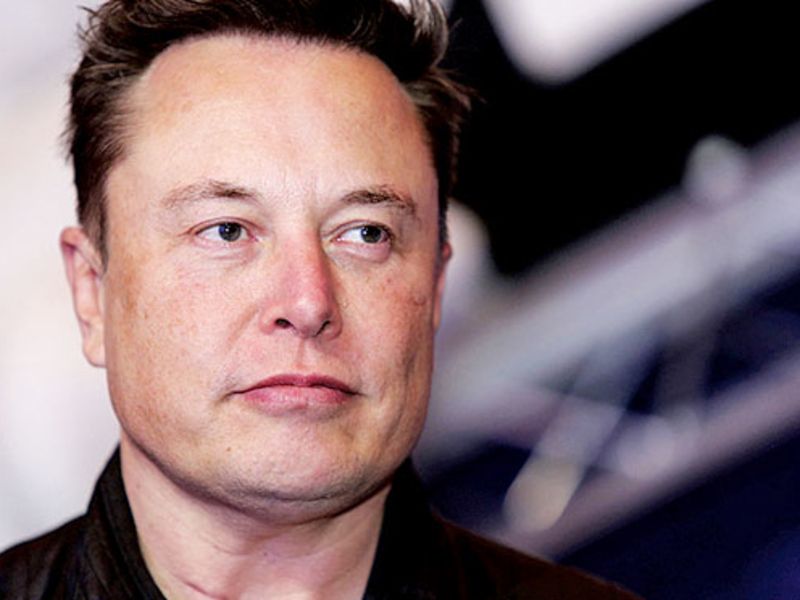
CEO Elon Musk often uses Tesla Inc.’s earnings calls to make wild, headline-grabbing predictions, many of which never come to pass.
Here’s a closer look at four notable assertions from the company’s first-quarter report last week, as Tesla posted record net income of $438 million yet continued to lose money on its core business of selling vehicles.
Musk previously said he expects the Model Y crossover to outsell all other Tesla vehicles combined. Now he’s aiming higher.
“We think Model Y will be the bestselling car or vehicle of any kind in the world and probably next year,” he said on the call. “So I’m not 100 percent certain next year, but I think it’s quite likely. I’d say more likely than not that in 2022, Model Y is the bestselling car or truck of any kind in the world.”
He later amended the claim on Twitter, saying it would be the bestselling vehicle by revenue in 2022 and No. 1 by volume in 2023.
Either way, it’s a tall task.
The Toyota Corolla claimed the title of bestselling vehicle globally in 2020, with 1.12 million sold, according to IHS Markit data. Ford Motor Co. has long owned the bestselling vehicle title in the U.S. with its F-Series line of pickups, many of which now sell for more than $50,000 each.
Musk’s claim could be difficult to track because Tesla does not report sales for individual models.
The company currently makes the Model Y at plants in California and China and plans to build it at sites now under construction in Texas and Germany. Musk has said production at both new plants is expected to begin by the end of the year, although the company is running into snags in Germany that could delay the site’s opening until early 2022.
The Model Y also faces increased competition from new electric crossovers such as the Ford Mustang Mach-E.
After previously promising deliveries of redesigned Model S sedans and Model X crossovers would begin in March, Musk for the first time acknowledged there have been “more challenges than expected” with their launch. Without elaborating, he said the company was conducting tests to ensure the batteries were safe, noting that “we’re just stacking them up in the yard and just making refinements to the cars that we built.”
Tesla in its earnings report said deliveries would begin “very soon.” Musk added that Model S deliveries would start “probably next month,” with Model X deliveries beginning in the third quarter.
It’s unclear what exactly the issue was and whether it has been resolved. The company reported zero production of the Model S and Model X in the first quarter.
Musk’s new timeline could also be jeopardized by the ongoing semiconductor shortage, which has affected virtually every automaker. CFO Zach Kirkhorn said Tesla faced “minor” disruptions last quarter as a result.
Tesla is riding a streak of seven straight quarterly profits, and while Musk didn’t make any predictions last week, the way Tesla is making money deserves a closer look.
The company’s $438 million in net income included $518 million from the sale of regulatory credits to competitors, as well as $101 million from selling some of the Bitcoin it bought this year.
It marked the highest quarterly regulatory credit sales figure in Tesla’s history and a 46 percent increase from the same period a year earlier.
Since the third quarter of 2019, when the profitability streak began, Tesla has generated nearly twice as much money from selling credits to competitors as it has reported in net income.
The amount the company has made from credits has risen each of the past two quarters, despite Kirkhorn insisting last year that Tesla was not planning the business around credit sales and does not expect them to be a factor long term.
Musk has long admitted that making cars is hard, especially since the company struggled to launch and ramp up production of the Model 3 sedan.
“What Tesla achieved on the automotive side was not to create an electric car,” he said last week. “The truly profound thing on the car side is that Tesla was the first American car company to achieve volume production of a car in 100 years and not go bankrupt. Basically, myself and many others at Tesla had to basically have several aneurysms to get this done.”
After describing instances where production was halted because of problems with trunk carpeting or USB ports, Musk said new-vehicle production constraints were a “logistics problem that makes World War II look trivial. I’m not kidding.”
While it’s unclear specifically what about the war Musk was referencing, it’s worth noting that automakers in Detroit created the Arsenal of Democracy by switching some plants from building vehicles to building planes and tanks in as little as 55 days.
Henry Ford’s Willow Run bomber plant, which made one B-24 Liberator every 63 minutes, opened in just six months, or roughly the same amount of time it took Tesla to emerge from the “production hell” of learning to build the Model 3.

